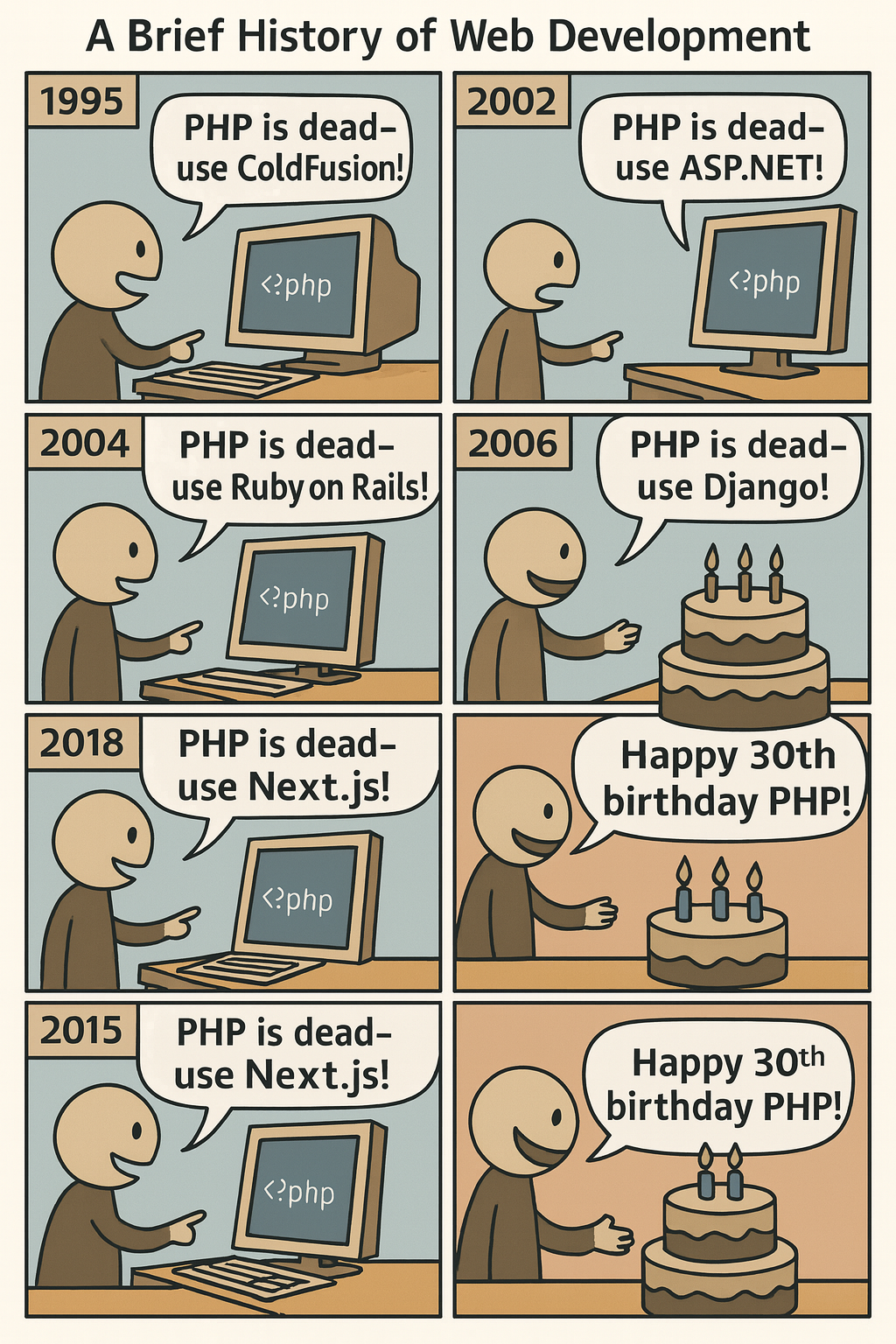Happy Birthday PHP

PHP has truly stood the test of time. Its journey began on June 8, 1995, with the first public release—PHP version 2. Even at that early stage, it offered features that made web development more accessible, like Perl-style variables, form handling, and the ability to mix HTML directly into the code. These capabilities made it easier for developers to create dynamic websites without having to reinvent the wheel.
Just a couple of years later, in 1997, two developers—Andi Gutmans and Zeev Suraski—saw the potential for something bigger. They rewrote large parts of PHP, focusing on making it more powerful and easier to extend. This effort paid off with the release of PHP 3.0 in June 1998. This version was a major leap forward, introducing better performance, cleaner syntax, and a more flexible architecture. It was also around this time that the language adopted its now-famous recursive acronym: “PHP: Hypertext Preprocessor.”
From its humble beginnings to powering some of the world’s largest websites, PHP has remained a core tool for millions of developers. Despite countless predictions of its decline, it continues to evolve, proving that strong foundations, constant improvements, and an active community can keep a technology relevant for decades.
